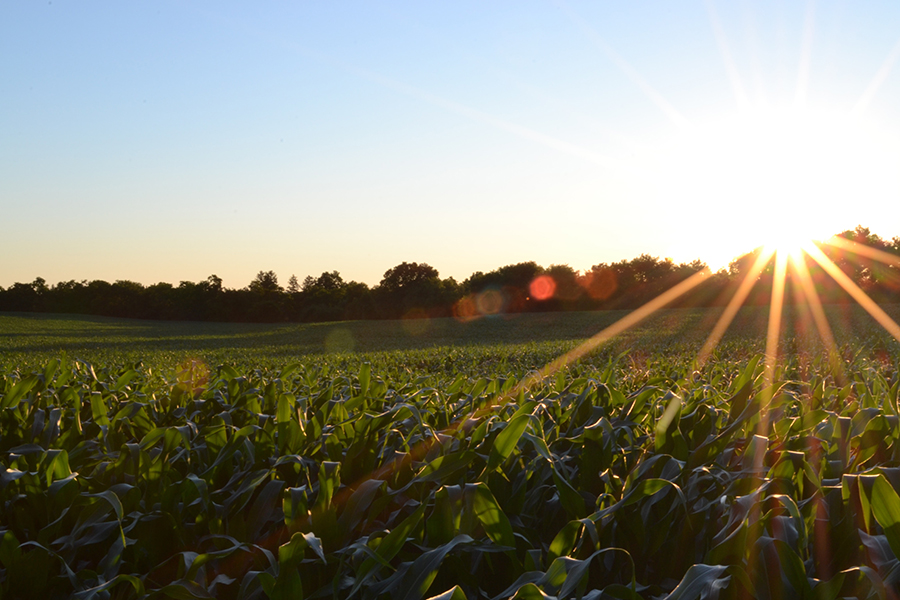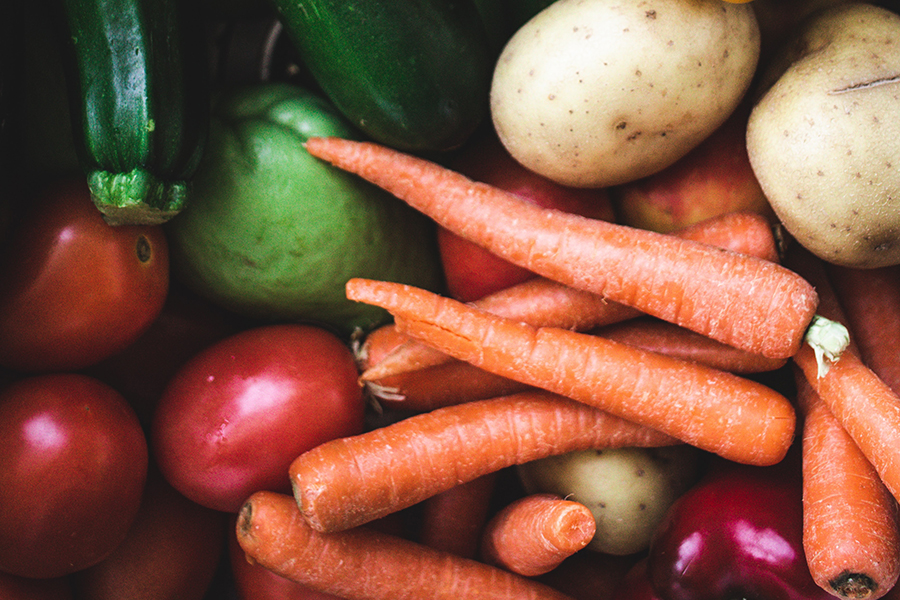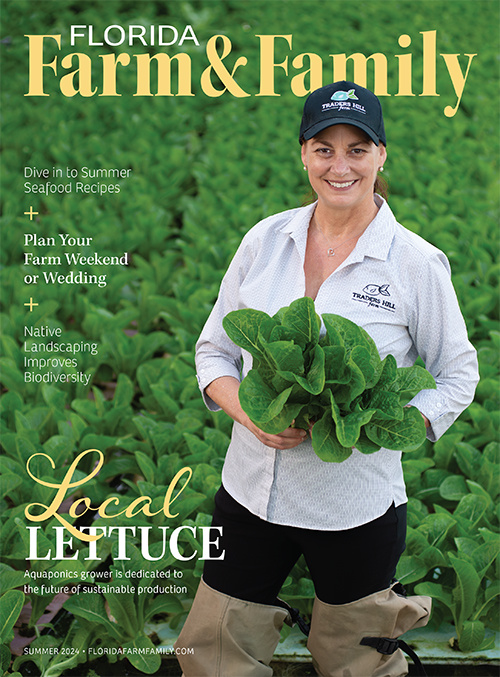
“I have been through hurricanes, drought and any number of other bad times. But this is something nobody has ever seen.”
With these words Palm Beach County vegetable grower James Alderman expressed a perspective on the COVID-19 emergency shared by most Florida farmers as well as other state residents.
Beginning in March, governments at all levels issued orders that closed businesses deemed non-essential in a move to stop the pandemic. The business closures occurred during peak harvest seasons for Florida’s winter vegetables as well as citrus and other fruits. As always, farmers continued to produce an abundance of food.
Large-scale marketing channels disappeared as hotels, restaurants, leisure and recreation facilities, food service companies and other buyers shut their doors. The complex, normally dependable supply chain could not be quickly reconfigured. Grocery stores were not able to handle and sell the quantity of foods immediately ready for sale. Routine shipping, storage and delivery collapsed.
As a result, growers who produce perishable crops faced an unprecedented challenge because the distribution to consumers was disrupted.
An April 15 survey by the Florida Department of Agriculture and Consumer Services revealed that the loss of markets for such foods as lettuce, green beans, cabbage, squash, zucchini, peppers and cucumbers had already cost growers collectively more than $522.5 million.
The problem spread to other farm groups, including beef, aquaculture and dairy producers. Dairies were under especially intense pressure because processing plants, holding full tanks of milk, could not accept additional shipments.
At the same time growers also faced a surge of subsidized Mexican imports. This trade problem has bedeviled Florida farmers for three decades and continues to slash their share of the U.S. market. The combination of forces crushed wholesale prices, driving them below the cost of harvest and transportation.

Connecting With Consumers
Such bleak prospects led Florida farmers to seek alternative ways of getting food to consumers. Some of them ramped up direct sales. Alderman and his employees arranged a box of mixed organic vegetables, including tomatoes, eggplant, squash, kale and Swiss chard for sale and delivery to customers in the local area.
The venture was successful, and he will likely continue it next year. But for growers like Alderman with substantial harvests each week, direct sale cannot be a method of sale to maintain his farm.
“There is no way a commercial farmer can get into the retail business,” he explains. “There is certainly a place for it, and it is picking up customers. If you have a staff and you want to do that, it would be a side business along with your main business. You are not going to move any volume with it.”
Sam Accursio, a Miami-Dade County farmer, has previously sold a small amount of vegetables to fellow residents. With his main wholesale customers unavailable, he decided to experiment with expanded direct sales.
At his family’s farm, workers packed a combination box of squash, cucumbers, zucchini, green beans, okra and other foods. Then he announced on social media that the farm had a large quantity of food available at a discount price. Area residents quickly responded.
“We did it on April 1, and to my amazement, we had miles and miles of cars waiting to be loaded,” Accursio says. “On the Saturday before Easter, we moved 45,000 pounds that morning – all by the box. Everybody was so appreciative that they had reasonably-priced, fresh food at their hands.”
This positive response has encouraged him to offer similar boxes next year. Even so, the farm cannot operate without volume buyers.
“We could not do direct sales alone right now,” Accursio says. “We have too many acres. Maybe in the future, it could come to that so that we could take care of the local area. In South Florida, we have 8.1 million people. If I could feed all of them, I would be doing very well.”
In another novel project, coordinated by Dade County Farm Bureau Executive Director Tyra Phillips, Accursio joined with two other farm families to provide the state prison system with fresh foods. The farm group sold a portion of their harvests and saved taxpayers an estimated $23,000.
“We are trying to figure out how we can make this a permanent program with the Department of Corrections and other state-run entities such as the state universities so they can procure fresh foods from their local farmers,” Phillips says.

Expanding Into Agritourism
Other farmers also struggled as the crisis intensified. Sarah Albritton says her family lost the wholesale market for their blueberry crop. Their U-Pick operation became the best alternative. In previous years, retail customers had picked less than 10 percent of their 170,000-pound crop. That changed in 2020.
“When all of this began – on top of the millions of Mexican blueberries that flooded the market – our market absolutely tanked,” Albritton says. “It cost more to pick it commercially, so we stopped picking. We opened the U-Pick for three to four days each week.”
She says prices for the family’s citrus were already low, and the return on beef cattle slipped with the business lockdown. The family may choose to hold their animals on the farm and not sell them until market conditions improve. They intend to adjust their Sarasota County farm business so they can protect against failing markets in the future.
Their plan, says Albritton, is to develop their agritourism enterprise and add strawberries, blackberries and other crops that can extend their harvest window from January to May.
“If the market tanks or if there is another outbreak, we will still be able to sell our commodities without having just one avenue.”
Some small farmers with loyal retail patrons found that their sales soared. Tim Clarkson uses a website to market foods he produces along with selections from neighboring farms in DeSoto County. The specialty poultry, beef, pork, lamb and vegetables he delivers to various locations in his custom trailer have been popular items.
“Our sales increased,” Clarkson says. “People have more time to shop, so they are placing bigger orders.”
Farming on Faith
Gilchrist County farmer Adam Cook planted his watermelon crop in early March knowing that he potentially faced a big risk.
“Farmers do a lot of things on faith,” Cook says. “We have faith that it will pan out. We plant seeds with faith that they are going to come up, faith that we will have favorable weather and faith that there will be a market.”
He pointed out that a 40-acre field yields 100,000 melons. This volume requires buyers who can accept substantial quantities.
“That is a lot of melons to get rid of in a small area when there are plenty of other melons being grown,” Cook explained. “We have to have large shipments to sell.”
Regular production on the farm includes small grains, grain corn, hay and beef cattle. For the next year, he will greatly expand his commodity mix with vegetables for local sale. His family’s farm will offer tomatoes, peas, green beans, corn, sweet potatoes and squash.
“It seems that there are many people who really want to have their food coming from a local source, and they would love to see where their food is coming from,” Cook observed. “I hope that we can make some headway toward that and satisfy people’s needs along the way.”
The link between farm families and non-farmers may have been considerably strengthened during the COVID-19 pandemic. Regardless of how Florida farmers adapt to the changing conditions of the general economy, they will be giving closer attention to their consumers.
Kimberly Morgan, an agricultural economist at Virginia Tech, is certain that communication between farm families and the rest of society has been enhanced.
“This is all showing that we have a connection to our neighbor even if we don’t realize it,” Morgan says. “Consumers are now open to and connecting to the farmgate, and along the supply chain with how their food is grown. They have invested some time in it, and they have invested some energy in it. Let’s keep it going.”








